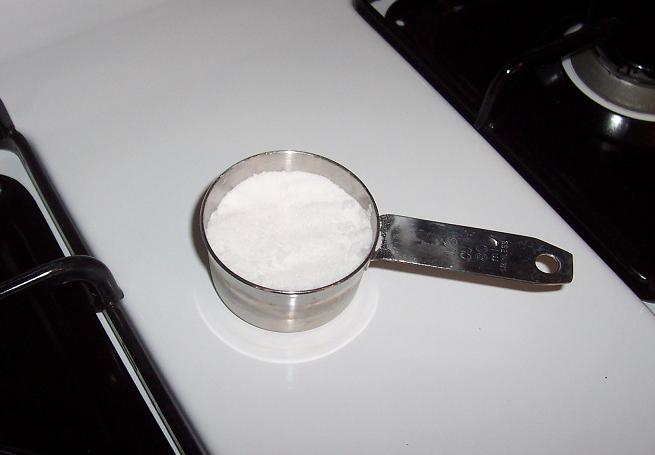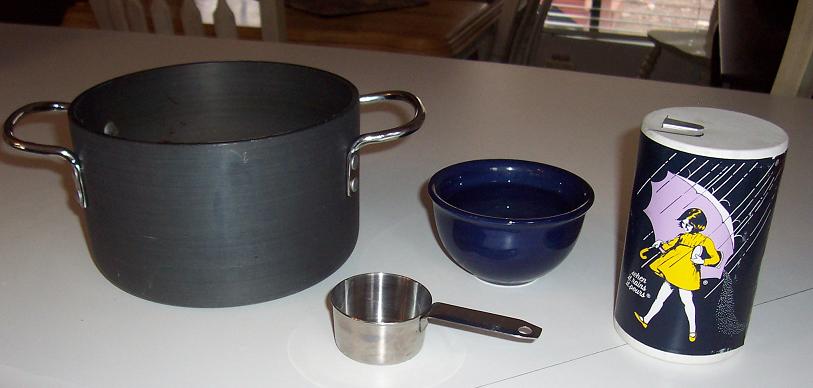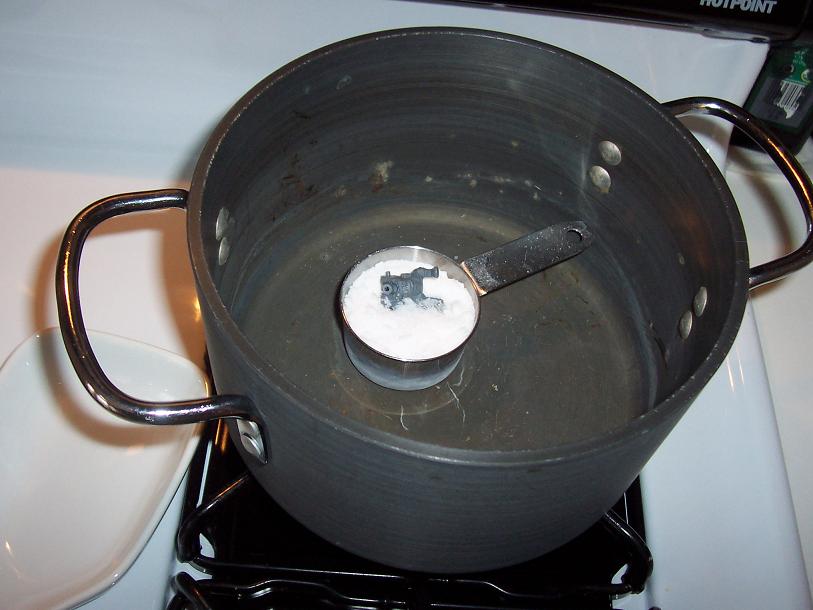TUTORIAL: Salt, a Modeler’s Best Friend?

Before I start I want to give this warning: Fire is hot, plastics give off toxic fumes, and don’t try this without close adult supervision. Now that we have that out of the way, I want to tell you about one of the cool new ways I learned to customize models.
We have all had models where the arm isn’t quite positioned the way you like it, or the leg would look much better if it was bent 20 degrees more at the knee. These are never easy to do. I always thought a clean cut with a jewelers saw and filing down the joints was usually the best option. However, I recently learned about using a hot salt dip.
The long and the short of it is you heat up the plastic enough to get it ply-able, then bend it into position and let it set. Sounds easy enough, and for the most part, it is. You just have to be very careful when you do it. Not only to make sure you don’t mess up the model, but to also make sure you don’t mess up the stove (or your hand, or the house)
The first step is to decide where and how much you want to adjust the model. Don’t go crazy, most marines are not double jointed. If the pose is unrealistic, it will be noticeable. Once you have that ready, it’s time to turn up the heat.
For this, you will need a heat source (stove, gas or electric will do), a large pot, a small metal container with no paint on it, salt, bowl of water near the stove, pot holders, a timer, the model and 1 or more pieces of sprue.
 First, fill the small metal container with salt. Use table salt, rock salt is too large and may not work well. Remember, this will get very hot, so make sure the container has no paint or plastic parts on it.
First, fill the small metal container with salt. Use table salt, rock salt is too large and may not work well. Remember, this will get very hot, so make sure the container has no paint or plastic parts on it.
Place the large pot on the stove and set the heat to high. Place the small container of salt into the large pot and set your timer for 7 minutes.
After about 7 or 8 minutes, your salt should be hot enough. The top of the salt may have crusted over. You will need to carefully break it apart.
Place the scrap pieces of sprue into the salt. Be careful not to touch the edges of the large pot. It is very hot and can leave a nasty scar.
After 90 seconds, remove the sprue. It should be very flimsy (like a wet noodle). Don’t worry if it is covered in salt; it will dissolve when you put it in the water. Don’t try to brush off the salt or it may scratch the plastic. Bend the plastic into shape and place it into the bowl of water to cool (You did remember to place the bowl next to the stove, right?) Make sure you are holding it in the correct shape you want it to have as you put it in the water. If you let go too soon, it will deform and you will lose the shape.
Remove it from the water and pay special attention to the hard edges of the sprue. If they look a little dull, you kept it in the salt too long. Try again with another scrap until you get the timing correct. The correct time could be anywhere from 30 seconds to 3 minutes, so take your time. You want to make sure you get this right. Once you have the time figured out, you are ready to try again with a model.
When you use your model, make sure to bury the entire limb (or gun or tentacle or whatever) in the salt. Any less and it may not bend well, any more and you risk deforming other parts of the model. If you don’t get it bent correctly the first time, you can put it in again. However, each attempt will cause you to lose some detail.
When you are done, you need to take care with your clean up. Turn off the stove and let it sit for a good long while to cool down. You don’t want to pour the hot salt down the sink and risk it doing the same thing to your pipes that it did to the sprue. Once it has cooled, pour the salt into water. This will help it dissolve before you put it down the drain. And please, don’t try to recycle the salt; no one likes French Fries that taste like ork boots.
And once again, I would like to reiterate Fire is hot, plastics give off toxic fumes, and I don’t want to get any calls from a frantic mother saying that little Timmy set the curtains on fire because he put his toy soldiers in the oven.
~This was without a doubt the craziest hobby technique I’d ever heard of, but it works, and really well!








